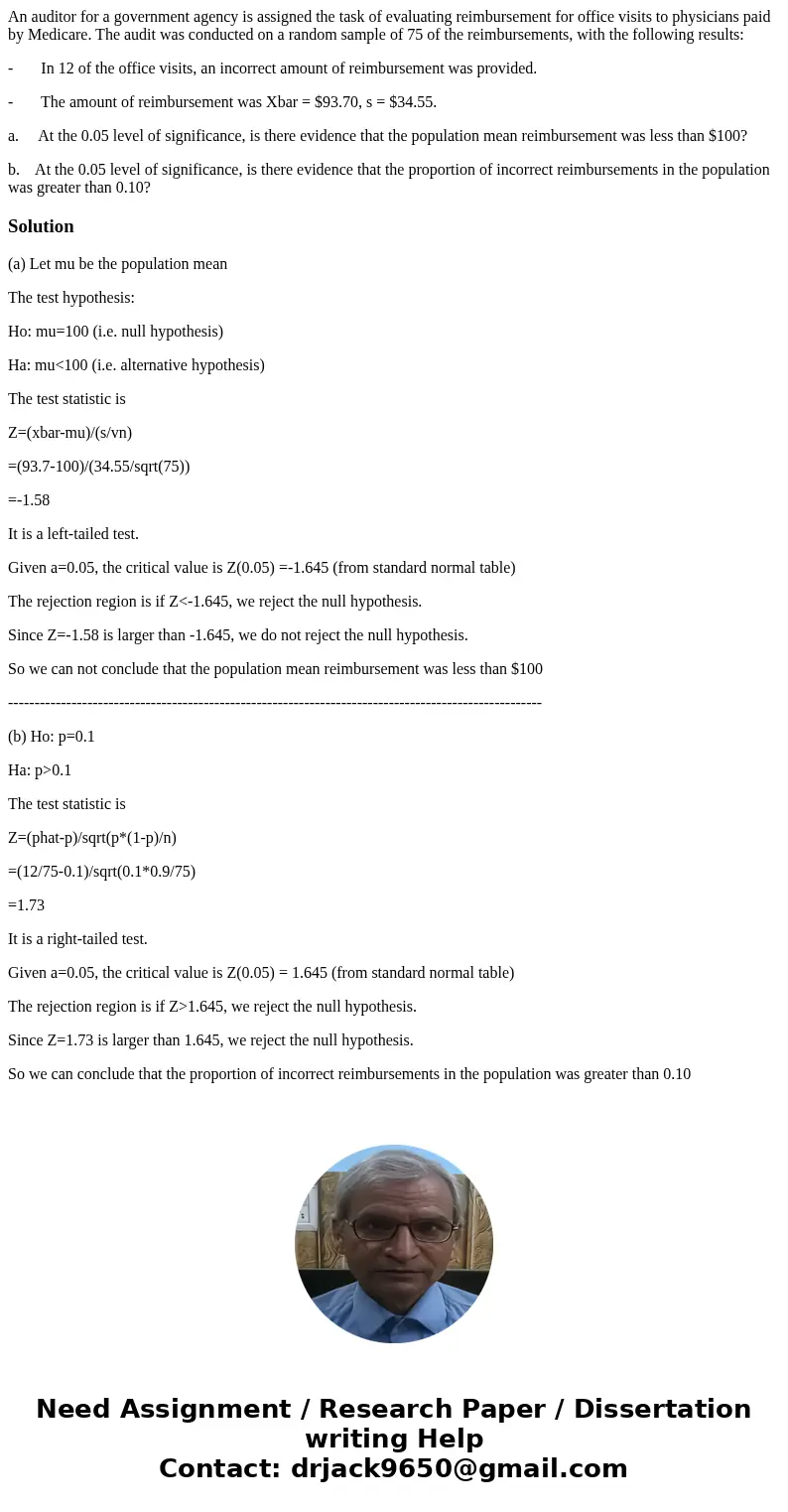An auditor for a government agency is assigned the task of e
An auditor for a government agency is assigned the task of evaluating reimbursement for office visits to physicians paid by Medicare. The audit was conducted on a random sample of 75 of the reimbursements, with the following results:
- In 12 of the office visits, an incorrect amount of reimbursement was provided.
- The amount of reimbursement was Xbar = $93.70, s = $34.55.
a. At the 0.05 level of significance, is there evidence that the population mean reimbursement was less than $100?
b. At the 0.05 level of significance, is there evidence that the proportion of incorrect reimbursements in the population was greater than 0.10?
Solution
(a) Let mu be the population mean
The test hypothesis:
Ho: mu=100 (i.e. null hypothesis)
Ha: mu<100 (i.e. alternative hypothesis)
The test statistic is
Z=(xbar-mu)/(s/vn)
=(93.7-100)/(34.55/sqrt(75))
=-1.58
It is a left-tailed test.
Given a=0.05, the critical value is Z(0.05) =-1.645 (from standard normal table)
The rejection region is if Z<-1.645, we reject the null hypothesis.
Since Z=-1.58 is larger than -1.645, we do not reject the null hypothesis.
So we can not conclude that the population mean reimbursement was less than $100
-----------------------------------------------------------------------------------------------------
(b) Ho: p=0.1
Ha: p>0.1
The test statistic is
Z=(phat-p)/sqrt(p*(1-p)/n)
=(12/75-0.1)/sqrt(0.1*0.9/75)
=1.73
It is a right-tailed test.
Given a=0.05, the critical value is Z(0.05) = 1.645 (from standard normal table)
The rejection region is if Z>1.645, we reject the null hypothesis.
Since Z=1.73 is larger than 1.645, we reject the null hypothesis.
So we can conclude that the proportion of incorrect reimbursements in the population was greater than 0.10

 Homework Sourse
Homework Sourse